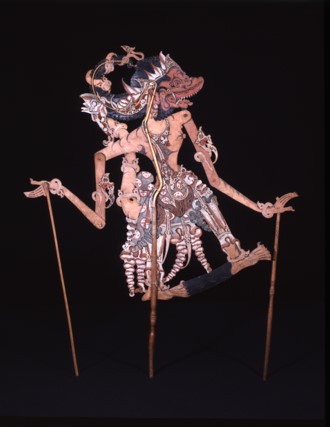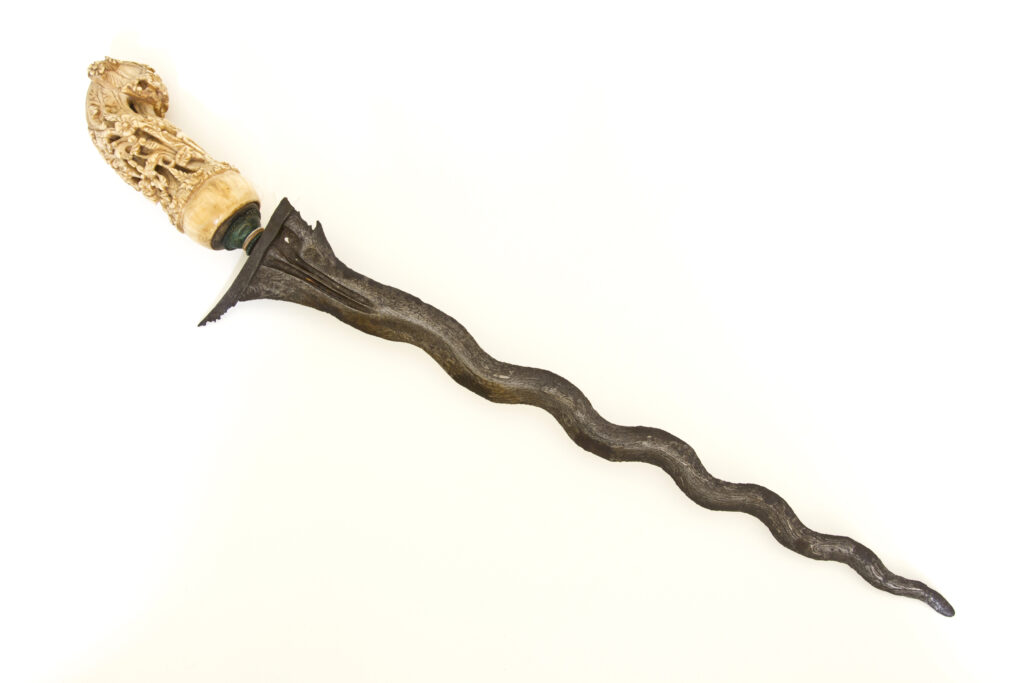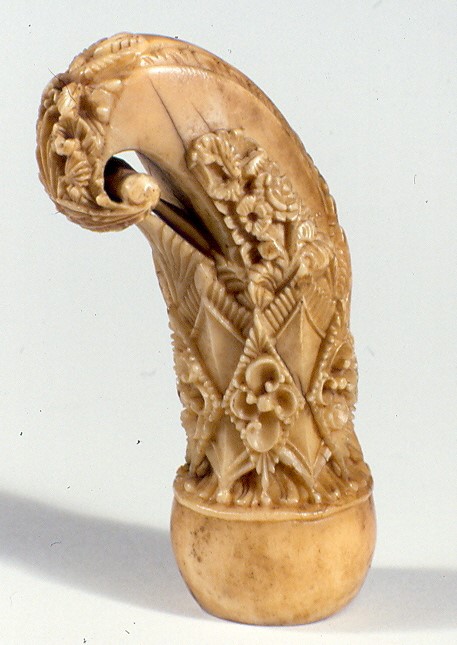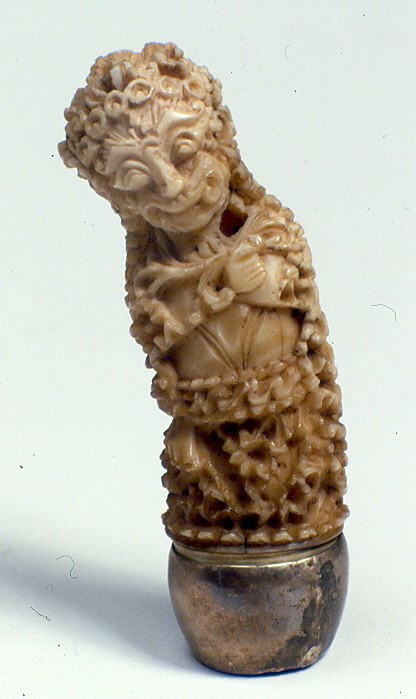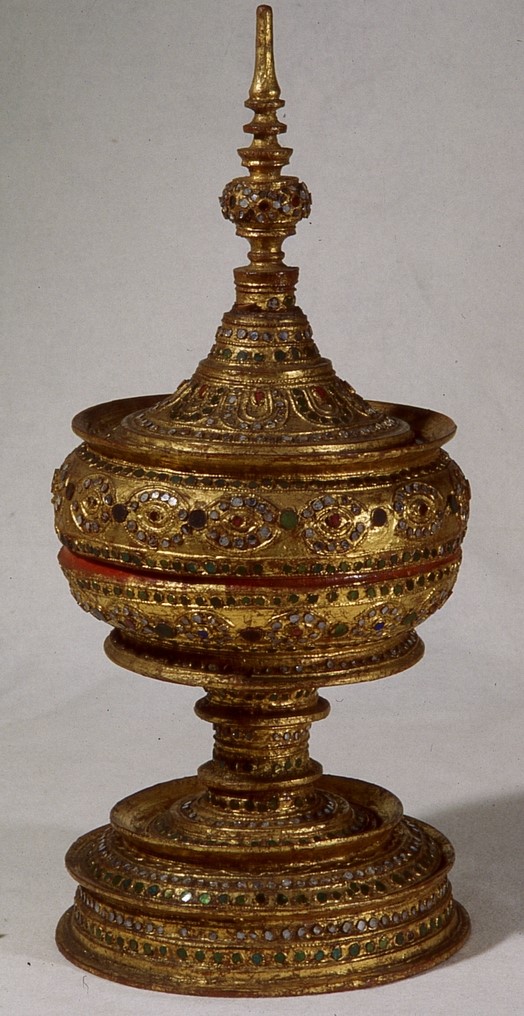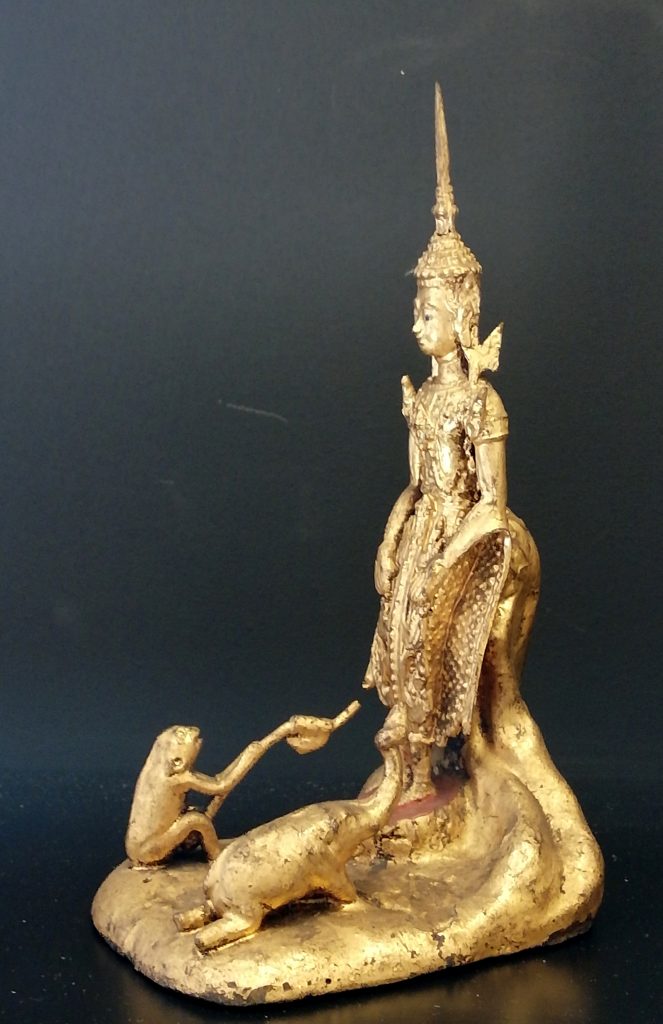ROOM 13
The last room is dedicated to Indonesia and Indochinese peninsula.
Javanese puppets (wayang kulit), daggers (Kris), batik textiles, Indonesian jewels, ceramics and silvers from Thailand, Burmese lacquers are exposed.
The wayang kulit figures are made of painted and gilded carved leather. During the play, they were maneuvered by the dalang, the puppeteer, narrating tales while giving rhythm to the orchestra. Subjects were based on Mahābhārata and Rāmāyana (Indian epics).
Daggers on the central cases are mainly kris with wavy or straight blades, representation of the naga (sacred snake) life force. The blades were obtained from iron and meteoric iron, layers of which were laid over each other and fused together. During the last phase, the metal was exposed to arsenic and acetic acid action.
Fabrics exposed near the wayang kulit puppets are precious batik, mainly from Java. These textiles were decorating according to a long process, including the use of wax, to waterproof some parts during the dyeing, to obtain polychromatic effects and unique patterns.
Precious silvers from Thailand, the most part of which made for betel consumption, inhabit wall showcases together with bencharong ceramics.
